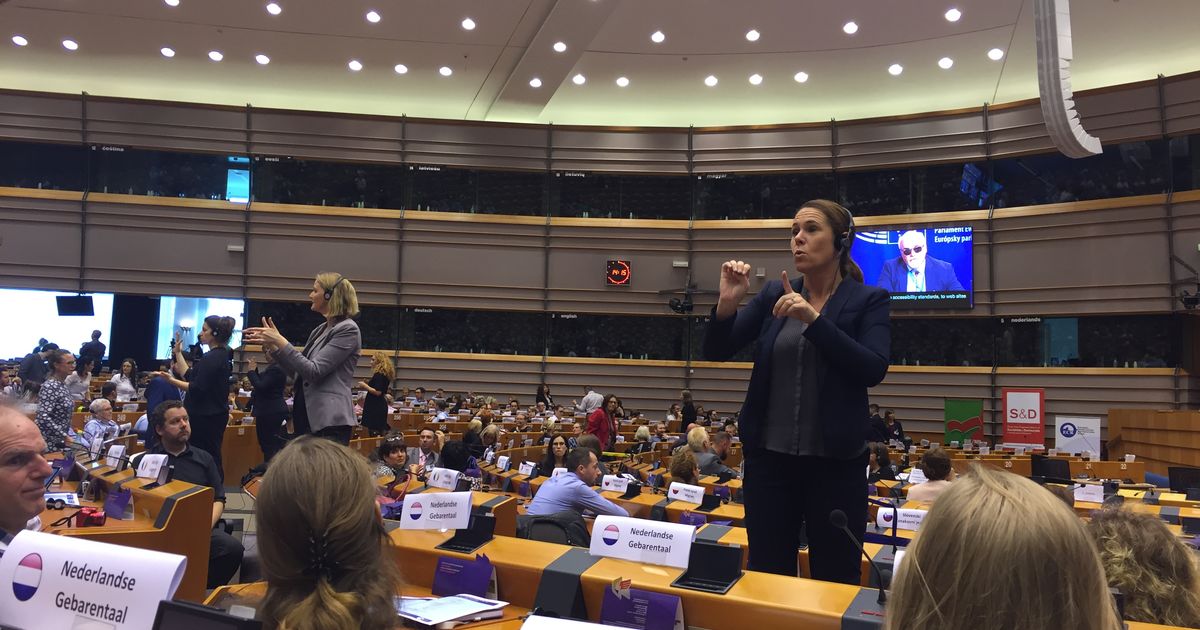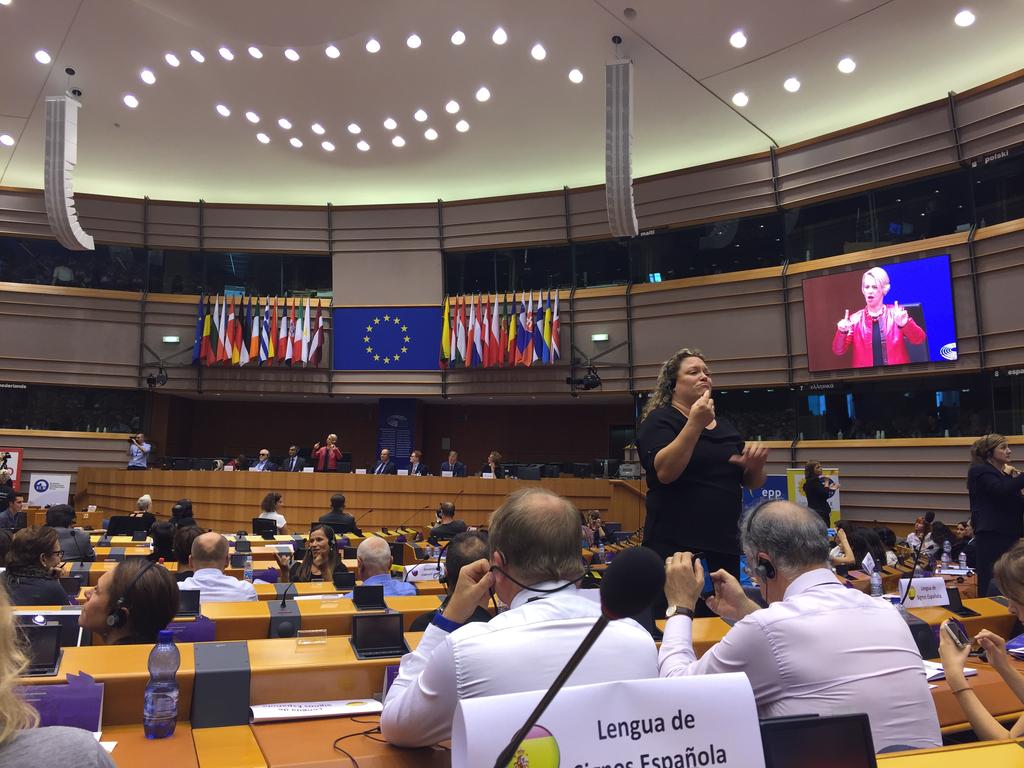
Debate about multilingualism and the role of sign languages in the EU
28.09.2016The Flemish Member of the European Parliament Helga Stevens, who was born deaf, had organised a conference in the European Parliament in Brussels about multilingualism and the role of sign languages in the European Union, which was attended by FUEN’s Brussels representative, Frank de Boer.
Never before, so many languages could be heard and seen in the hemicycle, the largest meeting room of the European Parliament in Brussels. Not only were all the 24 official languages of the EU used, but additional a further 31 European sign languages and also Japanese sign language were made available at a conference on 28 September 2016, for an audience consisting of both deaf and hearing participants from all the countries of the European Union.
Sign languages have many things in common with minority languages. These languages are used by a minority of deaf people in every country of Europe and like many minority languages, it has taken long for mainstream society to recognise sign languages for what they are, namely means of communication with a grammar and vocabulary of their own, allowing people to express themselves about human life in its full complexity. Although recognition has improved much over the past decades, in some EU countries there are still severe barriers for deaf people to participate fully in society.
But sign language is not only an issue of equal rights; it is also about the integration of persons with disabilities. According to EU Commissioner Navracsics, “recognition of the deaf and hard of hearing communities and their languages by the European Commission is a central issue. It is part of the principle of non-discrimination, as guaranteed by the Charter of Fundamental Rights of the European Union. The Charter also guarantees the right of persons with disabilities to ensure their independence, social and occupational integration and to take measures to ensure their participation in the life of the community as well.”

SAJTÓKÖZLEMÉNYEK
- FUEN wishes you a peaceful Christmas season, restful days and a bright, hopeful start to the new year!
- FUEN calls on the EU to act over systematic ethnic-based land confiscations in Slovakia
- Women of Minorities conference in Budapest calls for structural change to ensure equal political participation of minority women
- FUEN President Olivia Schubert at UN Forum on Minority Issues in Geneva
- "Laboratory of Peace": 28th Seminar of Slavic Minorities held in European Capital of Culture Gorica/Gorizia
- Equality in Political Participation and Representation: Third “Women of Minorities” Conference to Be Held in Budapest
- FUEN Working Group on Education discusses challenges and future of minority schooling in Europe
- 28th Seminar of Slavic Minorities in Europe to take place in Gorica/Gorizia, Italy
- Olivia Schubert in her first interview as FUEN President
- FUEN Assembly of Delegates elects new leadership – Olivia Schubert becomes new President














